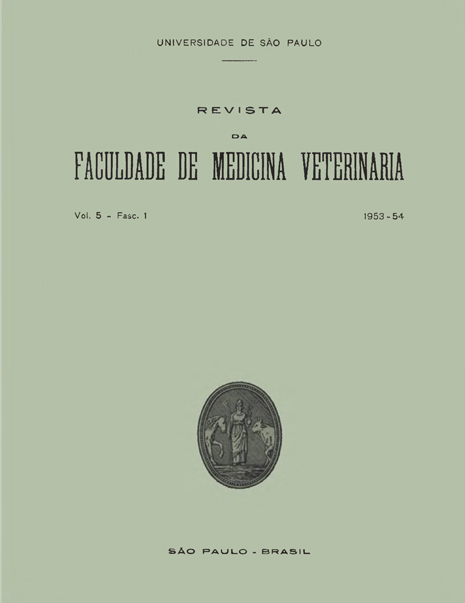Uremia in dogs
DOI:
https://doi.org/10.11606/issn.2318-5066.v5i1p157-172Keywords:
The article has no keywords.Abstract
Uremic syndrome in dogs has been described. The A. has discussed the etio-pathogeny of the process taking a special interest in renal uremia as it was the mainly cause responsible for the syndrome in the observed dogs. A classification for the uremic cases has been suggested based on observations of other authors, as well as on the types most commonly found in canine clinical practice. The investigations of various AA. about the influence of urea, residual nitrogen, products of intestinal putrefaction, parathyroidal and acid-basic balance disorders, on the uremic syndrome have been discussed. The most evident symptoms in the 12 cases observed were: incoercible vomits; polydipsia, cyanotic or icteric mucosae (hepato-renal syndrome), stomatitis, signs of dehydration and apathy (caused by retained toxic matter).Other symptoms which could be pointed out were: increase, of the 2nd heart sound at the aortic focus and intensified pulsation of the abdominal aorta, which because easily audible and palpable; presence, in some cases, of gastro enteritis, sometimes hemorrhagic, possibly due to irritation caused by the ammonia resulting from splitting of urea by micro-organisms. In one case. Kussmaul respiration was present. The blood examination has demonstrated an increase of the urea amount asthe most striking symptom. This increase was proportional to the severity of the symptoms, as the blood from two dogs that survived, showed an urea level slightly lower than 1 g/liter. However, the symptoms were much more alarming in animals with an higher level, increased color index, hemoconcentration and anemia caused by a renal process could be identified in some cases. Marked leucocytosis were found in all animals observed. The urine showed a definite albuminuria, granular casts and epithelial cells from renal origin and sometimes there were hyaline or waxy casts, red blood cells or pus corpuscles. Biliary pigments were frequent and urobilin elimination was increased. When a necropsy could be carried out, intersticial nephritis (2 cases) and nephrosis (2 cases), could be find.


